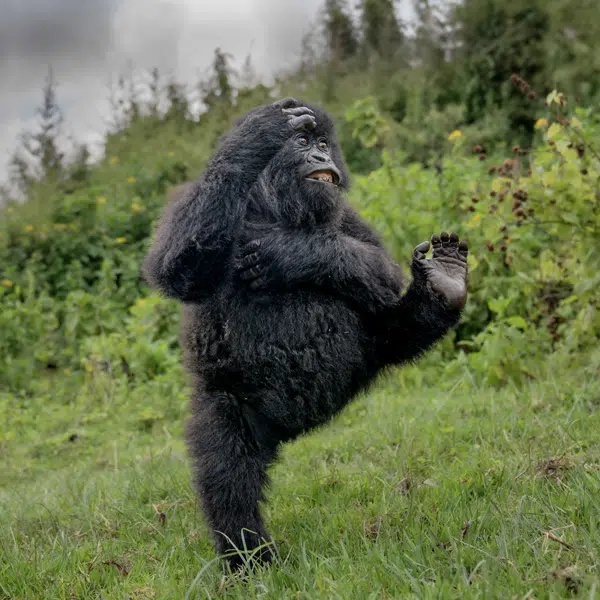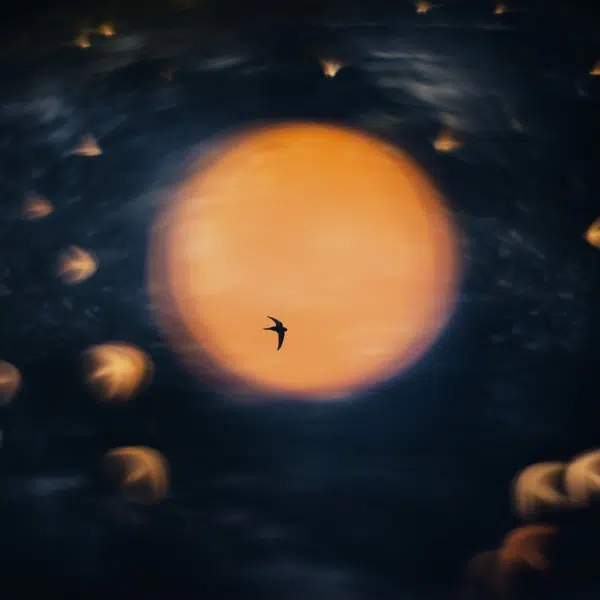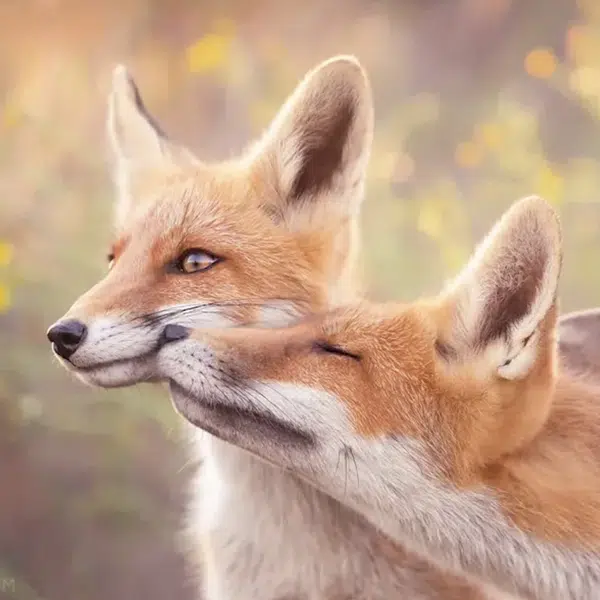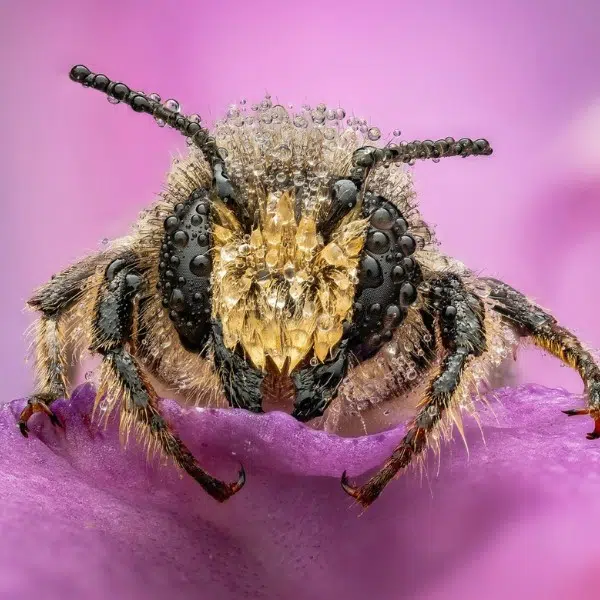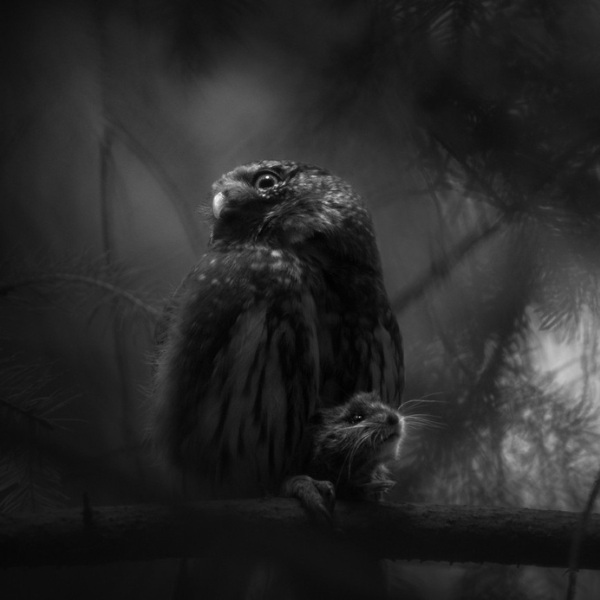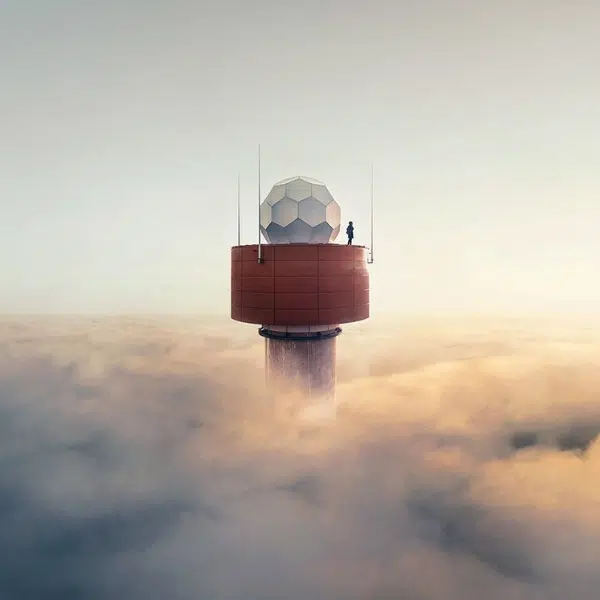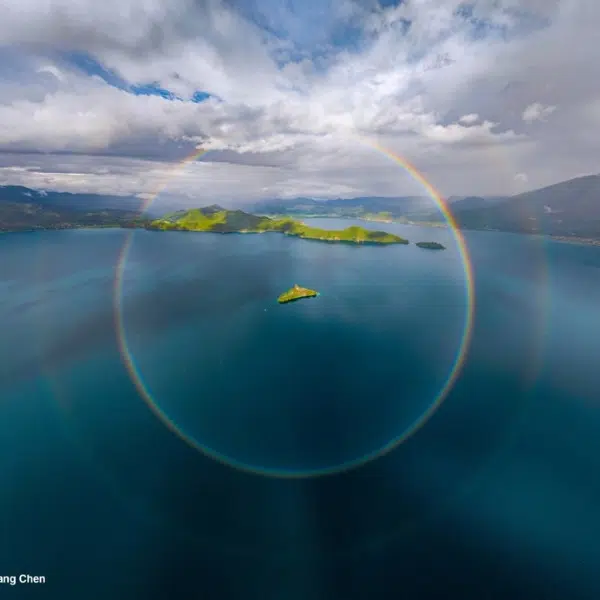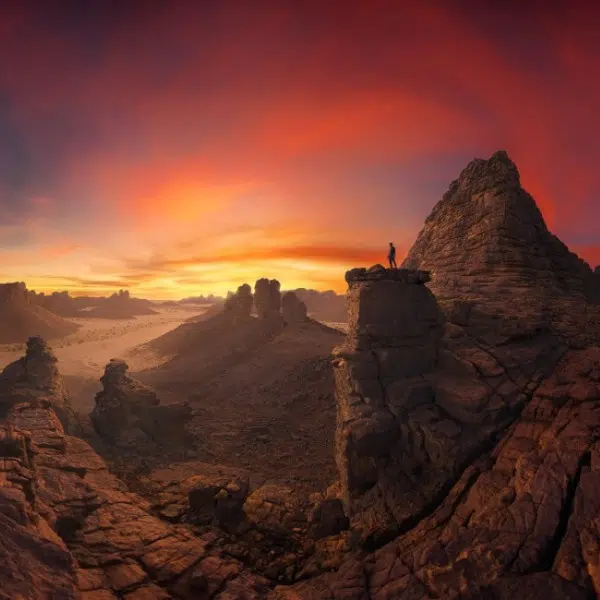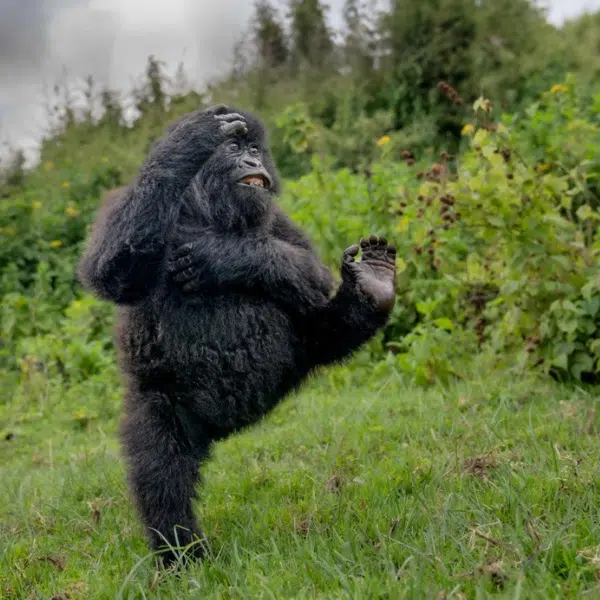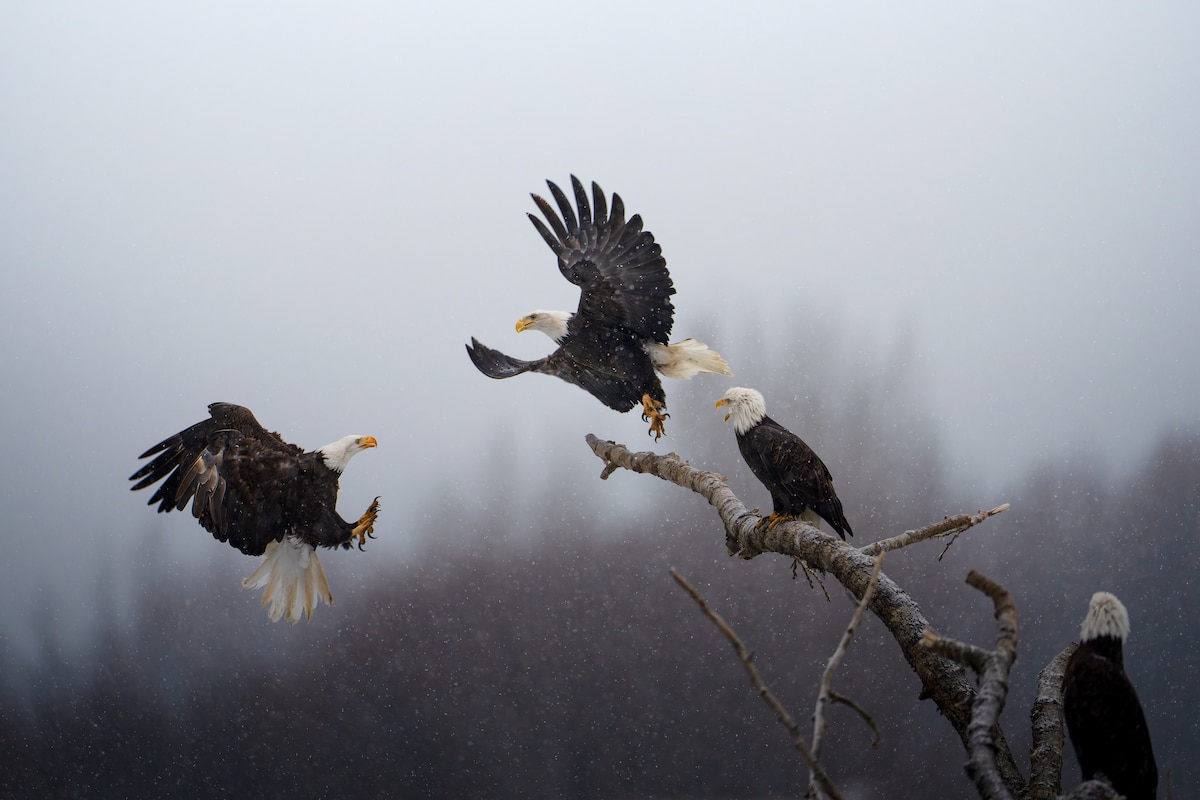
“Dance of the Eagles” by Karthik Subramaniam. Grand Prize Winner.
A bald eagle arrives to steal a perch on a tree log that offers a strategic view of the shoreline at the Chilkat Bald Eagle Preserve in Alaska. When other eagles drag freshly caught salmon in from the water, these bystanders swoop in to take a share. “Hours of observing their patterns and behavior helped me capture moments like these,” says photographer Karthik Subramaniam, a software engineer with a passion for wildlife photography.
With the news that his photo will be published in the May issue of National Geographic, software engineer Karthik Subramaniam is living every amateur photographer's dream. He earned this honor by winning the National Geographic Picture of the Year photo contest. His photo Dance of the Eagles was selected by a panel of seasoned Nat Geo photo editors from among nearly 5,000 entries.
The photo, which was taken at Alaska's Chilkat Bald Eagle Preserve, is an incredible look at the dynamic between these birds of prey perched on a tree as they wait to hunt salmon in the river below. Subramaniam has visited the preserve twice during the annual salmon run, which allowed him to hone in on their behaviors and rituals.
“Studying their behavior patterns helped me anticipate some of their actions,” he confessed. “For example, when an eagle drags salmon to a dry spot, other eagles in the area would inevitably fly there to claim their share, and that leads to chaotic action. They also seemed to have some favorite spots to hang out, and usually, commotion ensues when an eagle wants an already occupied spot. This photo was taken during one such commotion.”
Subramaniam's victory is even more striking because he only began photographing wildlife in 2020. While he's always been a fan of landscape and travel photography, the pandemic shifted his creativity. Forced to stay in one location, he began venturing out near his home in San Francisco and cultivated a new passion.
The time he spent driving to nature reserves and waiting for the right creative opportunities taught him the patience he needed to take his winning photograph. And his victory is just another example of how the oddity of the last several years also has a silver lining in forcing people to explore new hobbies.
See more images from the contest with some of the images that were selected as honorable mentions. And check out the full gallery of winners on the National Geographic website.
See some of the finalists from the National Geographic Picture of the Year photo contest.

Rhez Solano, Honorable Mention
King penguins crowd together in the viewfinder of Rhez Solano on the beaches of Gold Harbor in South Georgia. The island sits in the remote southern Atlantic Ocean, not far from Antarctica, and hosts some 25,000 breeding pairs of king penguins, along with gentoo penguins, and elephant seals.
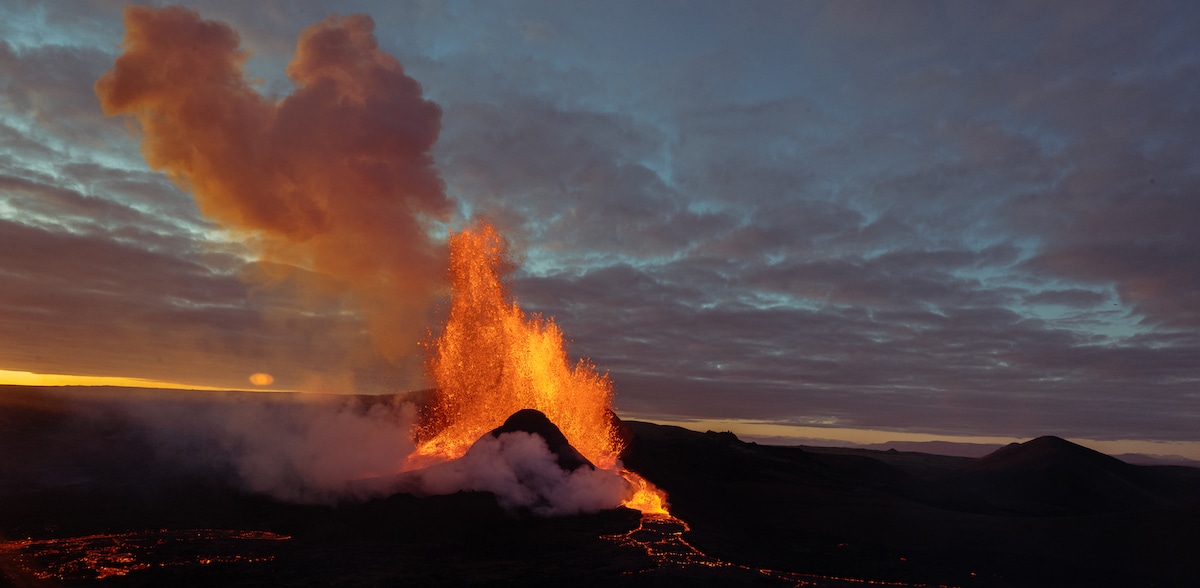
Riten Dharia, Honorable Mention
In May 2021, the Fagradalsfjall volcano erupted in the Reykjanes Peninsula in Iceland for the first time in over six thousand years. The lava flow continued for six months, spreading hard black rock across the landscape. It was, says Riten Dharia, who captured this image, “an exhibition of the raw and awesome power of nature.”
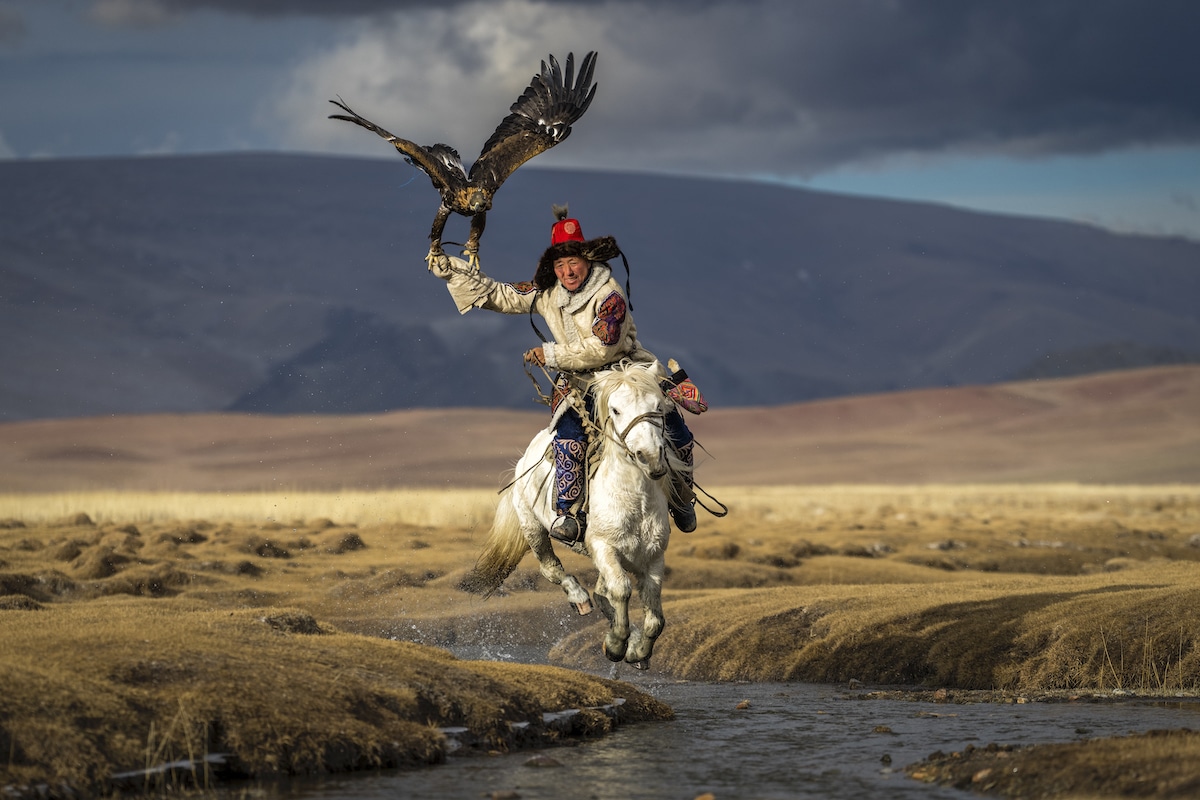
Eric Esterle, Honorable Mention
Asiilbek, a nomadic Kazakh eagle hunter, preps his golden eagle, Burged, for a horseback hunt in the grasslands outside of Bayan-Ölgii, the westernmost province of Mongolia. The eagle’s training begins when fledglings are captured from their cliff edge nests and taught how to hunt for hare, fox, and even deer. The tradition stretches back 3,000 years.
“For this image, I was lying on my stomach in the prone position looking through the electronic viewfinder at the edge of the stream,” says photographer Eric Esterle. “The ground shook as Asiilbek's horse passed less than a few feet away, splashing me with ice cold water. I remember covering my camera with my body and putting my head down.”

Bruce Taubert, Honorable Mention
Wildlife biologist Bruce Taubert was studying the eating habits of Arizona’s small desert owls when he got lucky: he found a rare screech owl next. For several nights, he photographed the owls carrying food back to their chicks using an infrared trip beam that triggers a high-speed flash. This owl collected a Mediterranean gecko on its nightly run. “Mediterranean geckos are nonnative in Arizona and their distribution is expanding,” Taubert says. His theory on how they got there? “It may be that the geckos were delivered to [nearby] houses by landscape companies bringing in exotic plants.”
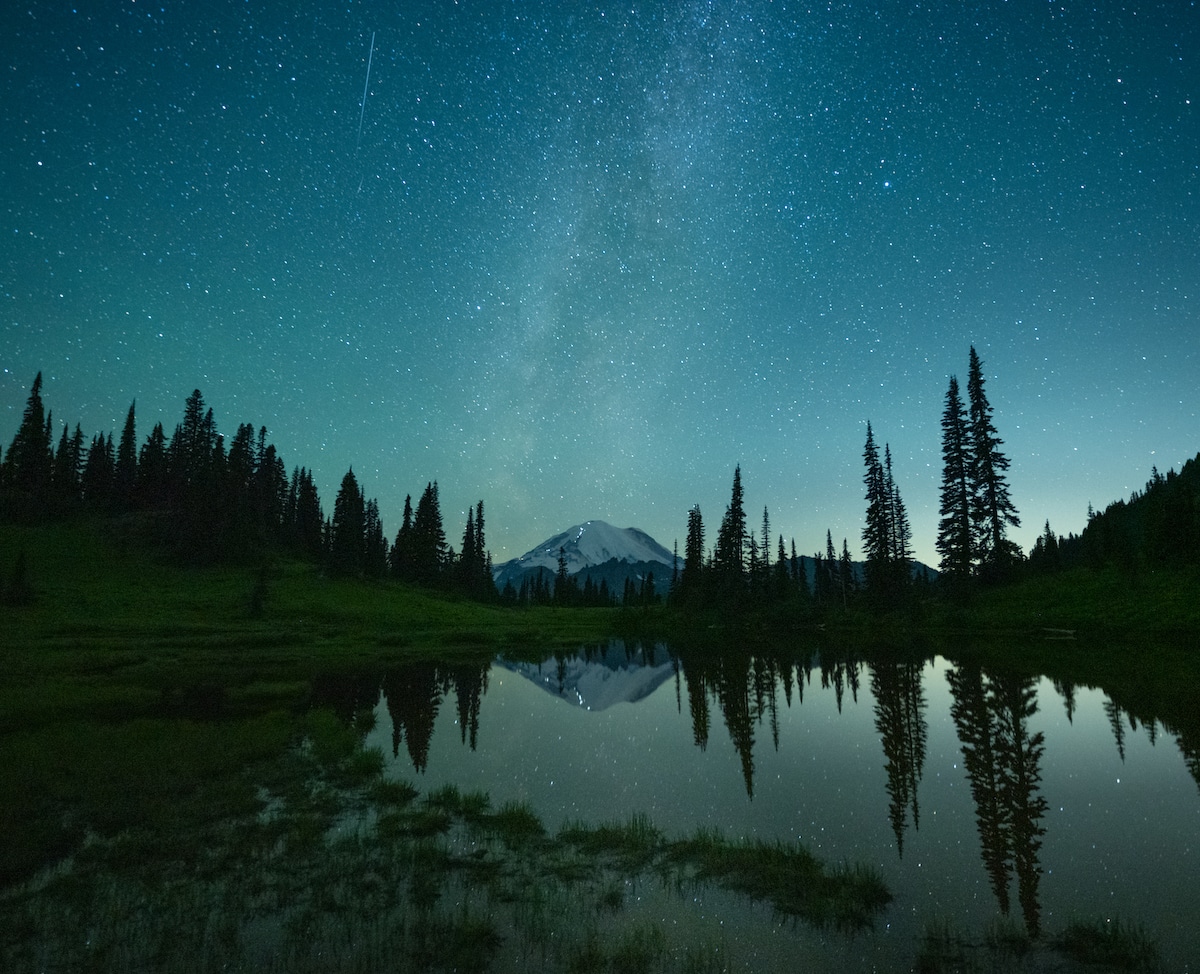
W. Kent Williamson, Honorable Mention
Sometimes a sleepless night is key to great photography. At approximately 3:40 a.m. on a frigid summer morning, photographer W. Kent Williamson snapped this image from Tipsoo Lake in Mount Rainier National Park, Washington. From across the still water, he could see a line of headlights as weary climbers approached the peak’s 14,411-foot summit—the culmination of a multi-day climb. “The night sky was unusually clear, and the Milky Way could be seen just above the mountain,” Williamson says. “I was surprised to see how bright the climbers’ lanterns were.”

An Li, Honorable Mention
Maras in Peru. The archaeological record shows that salt extraction likely began here before the Inca Empire, perhaps as far back as 500 AD. Today that tradition continues with the families who own wells, each of which produces some 400 pounds of salt per month. “The salt wells receive water through channels sourced by a salty underground spring nearby and once the water evaporates, the crystallized salt remains,” says An Li, who captured this picture. “Here, a salt miner is using a wooden rake to extract the salt.”

Alex Berger, Honorable Mention
On a road trip through the Austrian Alps, Alex Berger spotted a one-lane road that wound into the mountains and looped back on the map. He followed it alongside a small stream lined with walls of forest when he spotted this golden tree blooming from between the trunks. There’s “a fantasy-ish inspired dimension for me,” says Berger, “which gives me goosebumps.”












































































